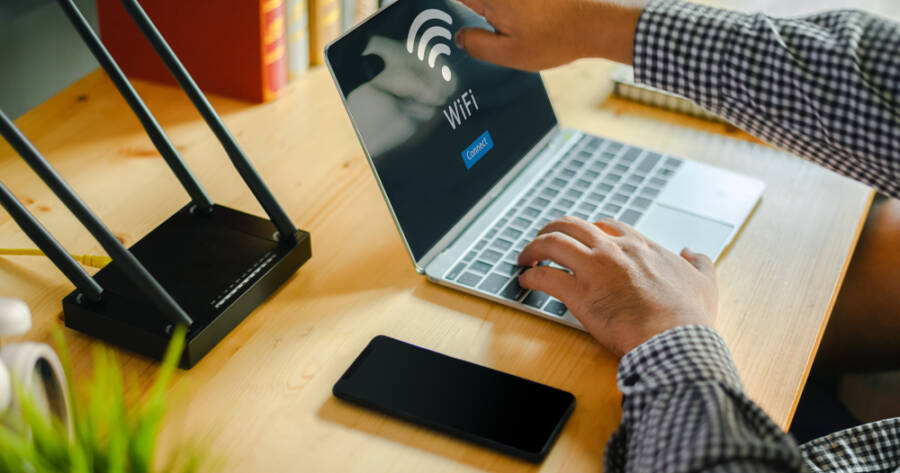In a world where everything is becoming digital, fast and reliable internet access is essential. Yet, many people still experience slow speeds, expensive service plans, and unreliable connectivity. The good news? There are new solutions emerging every day that could help individuals and households improve their internet experience—if they know where to look. This article explores potential ways to address slow internet and reduce costs, providing helpful tips and insights on how you could finally get the connection you need.
Why Internet Speeds Lag Behind
Several factors can contribute to a slow internet connection. One common reason is the infrastructure used by internet service providers (ISPs). Many regions, especially rural ones, still rely on old copper wiring, which limits bandwidth and speed. Even fiber-optic lines, capable of providing blazing speeds, are often restricted to urban areas due to high installation costs. Congestion on the network is another issue, especially during peak hours when many users compete for the same bandwidth.
Hardware limitations inside the home may also be to blame. Outdated routers, poor Wi-Fi signal distribution, or a large number of devices connected simultaneously can choke your internet speed. Moreover, activities like streaming or gaming require high bandwidth, further burdening your connection if not managed properly.
Affordable Alternatives: Emerging Technologies and Solutions
A growing number of technologies are changing how people access the internet. Depending on your location and needs, these alternatives might help you secure faster speeds and save money over time.
Starlink and Satellite Internet Options
For those in rural areas without access to traditional fiber connections, satellite internet services like Starlink offer a promising alternative. While latency has traditionally been a concern for satellite internet, new low-earth orbit satellites significantly reduce the delay, improving the user experience for activities such as video calls or online gaming. However, pricing for hardware and subscription fees may still be a barrier, so it’s worth exploring whether these services align with your budget.
5G Home Internet: Faster Speeds, Lower Costs
Telecommunications companies are increasingly offering 5G home internet, which provides speeds comparable to fiber-optic connections. Since 5G technology doesn’t rely on physical cables, it can offer fast, wireless internet to homes in areas where traditional services struggle to reach. In some cases, these services come with flexible, month-to-month pricing and minimal installation fees, making them a more affordable option than many long-term broadband contracts.
Community Networks and Mesh Systems
In some places, community internet networks are gaining traction. These cooperative systems allow neighborhoods to share bandwidth and distribute the costs among residents, often leading to much lower fees than what major ISPs charge. Mesh Wi-Fi systems are another innovative solution, boosting signals across larger homes or multi-story buildings by creating multiple access points, reducing the need for expensive ISP upgrades.
Optimizing Your Existing Internet for Speed and Value
Even if switching providers or technologies isn’t an option, there are steps you can take to improve your current setup and potentially lower your costs.
- Evaluate your internet plan: Many people pay for speeds they don’t actually need. Use online speed tests to see what you’re getting versus what you’re paying for. If your usage mainly involves browsing and streaming on a few devices, consider downgrading to a cheaper plan with lower speeds that still meet your needs.
- Upgrade your router: Older routers may not be capable of handling high-speed internet, leading to bottlenecks. Upgrading to a modern router with dual-band or tri-band capabilities can dramatically improve Wi-Fi performance across your home.
- Positioning your router for better coverage: Placing your router in a central location and away from thick walls can enhance signal strength. Additionally, routers with advanced settings allow you to prioritize specific devices for better speeds, such as gaming consoles or work computers.
- Limit background data usage: Background apps and devices often consume bandwidth without users realizing it. Setting devices to update only at off-peak hours or disabling auto-sync features can help reduce unnecessary congestion.
- Negotiate with your ISP: ISPs often offer promotional rates that expire after a certain period, causing your bill to rise unexpectedly. Calling your provider to negotiate a better deal or switch to a competitor’s offer might result in significant savings.
The Future of Affordable Internet Access
The internet landscape is rapidly evolving, with promising developments on the horizon. Governments around the world are investing in broadband expansion, aiming to bridge the digital divide and make fast internet more accessible. As competition among ISPs increases, consumers might see more attractive pricing models and flexible contracts, empowering them to choose services tailored to their needs.
Moreover, innovations such as Wi-Fi 7 and network virtualization may soon offer even faster speeds and better network management capabilities. If these technologies become mainstream, they could further drive down prices and improve service quality. However, much of this will depend on how quickly they are adopted by providers and made available to the public.
A Better Internet Experience is Within Reach
While slow and expensive internet remains a problem for many, emerging technologies and practical solutions offer hope. Whether it’s exploring new services like 5G or satellite internet, joining a community network, or optimizing your current setup, there are steps you can take to improve your internet experience. Additionally, being proactive by monitoring your plan and negotiating with your provider can make a noticeable difference in both speed and cost.
Though no solution offers a guaranteed fix, the trend toward faster, cheaper, and more accessible internet is encouraging. With a bit of research and effort, you may soon say goodbye to the frustrations of sluggish connections and expensive bills—and enjoy a more seamless digital life.
